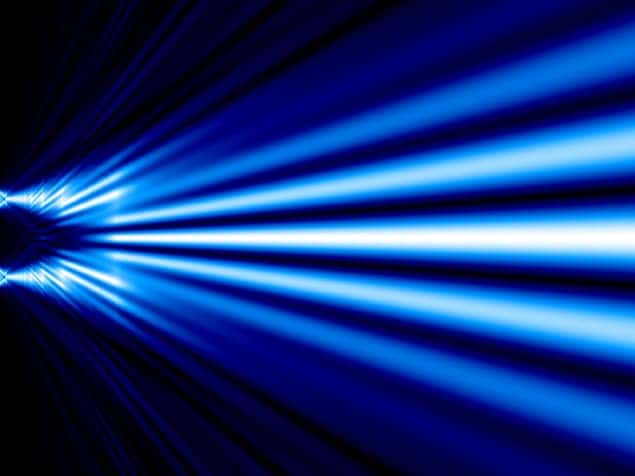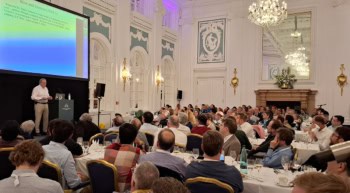With the Physics World 2019 Breakthrough of the Year due to be announced on 12 December, Physics World journalists look back at the past decade of winners and explore how research in that field has moved on. Here Matin Durrani reflects on the 2011 breakthrough for “weak measurement”

I can’t believe it’s eight years since Physics World awarded the 2011 Breakthrough of the Year to Aephraim Steinberg and colleagues from the University of Toronto in Canada for tracking the average paths of single photons passing through a Young’s double-slit experiment – a feat, Steinberg said, that physicists had been “brainwashed” into thinking was impossible.
Steinberg’s work essentially challenged the notion, drilled into generations of quantum-mechanics students, that if you gain any knowledge of the paths taken by individual photons as they travel through two closely spaced slits, then you immediately destroy the interference pattern.
Turns out you can gain some information and keep the pattern intact using the technique of “weak measurement”. In his experiment, Steinberg didn’t actually use a double slit but instead passed photons through a beamsplitter linked to two optical fibres so that the photons went down one or other of the fibres. After emerging from the fibres, the photons made an interference pattern on a detector screen.
Now understanding the experiment is the easy bit. What’s harder is remembering why an ordinary double-slit pattern is destroyed if you elicit information about the photons’ paths. Trickier still is understanding how weak measurement works. And to really understand why it doesn’t destroy the interference pattern, well now you’re entering truly mind-bending territory, fascinating though it is.
Inspired by Steinberg’s award, Physics World invited him to write a feature article on weak measurement, which I edited in late 2012. I remember working on the article, entitled “In praise of weakness”, and Steinberg being incredibly patient as I asked one dumb question after another to try to get to the bottom of this slipperiest of slippery problems. It’s why quantum mechanics is so beloved in the popular-science market.
Every time I thought I’d finally understood the essence of weak measurement, my grasp slid away like sand through fingers. That’s no fault of Steinberg, just that weak measurement is so deeply profound and thought-provoking.
Wondering whether weak measurement has lived up the promise of its early days, I e-mailed Steinberg for this thoughts. He told me it’s continued to grow as a field even if it remains controversial. “This is healthy,” he admits, “as it means people are still grappling with what they do or don’t tell us about reality, and whether or not they are of practical use in various situations.”
People are still grappling with what [weak measurements] do or don’t tell us about reality.
Aephraim Steinberg
Steinberg cites plenty of convincing precision-measurement experiments that have used weak-value amplification, and, although he admits there are “very specific limited situations in which this is truly an important aspect of the measurement technique”, he does think it’s clear that some such cases exist.
Weak values have been investigated in more and more physical systems, Steinberg says, having been used for example by Jeff Lundeen from the National Research Council of Canada in Ottawa to carry out “direct” measurements of the wave function, which was a runner-up in the 2011 Physics World Breakthrough of the Year awards.

A decade of Physics World breakthroughs: 2010 – new ways of controlling antimatter
Steinberg himself has shown that one optical beam can weakly measure the photon number in another beam, and confirmed that even a single photon can act like eight photons in terms of how strongly it affected this probe beam.
This year his group has also submitted a paper that tries to determine how long it takes rubidium atoms to tunnel through a barrier, which is a bit like working out what a tunnelling atom was doing before it was transmitted. Now I don’t know about you, but that’s one helluva weird question to be able to not only ask – but answer too.
Weak measurement has even been used to investigate fundamental puzzles, such as the “quantum Cheshire cat” (i.e. can a particle’s charge or mass be in one place, while its spin is somewhere else?) and the violation of the “pigeonhole principle” (can you put three pigeons in two holes, without there being any chance that any two pigeons are in the same hole?). Steinberg also mentions something about the “quantum shutter” effect (don’t ask).
So it seems like even though people are still debating whether “weak values” are elements of reality, there are lots of intriguing experiments in the pipeline – including some fundamental questions from the past that can finally be addressed experimentally and theoretically, at least in part.
I’m convinced that Steinberg’s 2011 work was a worthy winner of the third-ever Physics World Breakthrough of the Year award.



